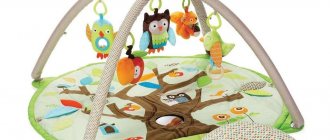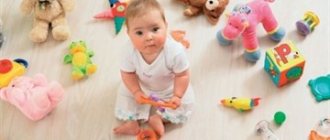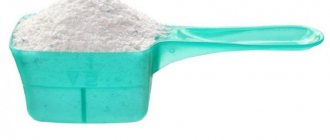An educational mat has come into use relatively recently and has already gained wide popularity: in caring for a child and raising him at an early age, he can replace a whole set of things and at the same time practically does not take up the usable space of the home. Accordingly, the prices for these items are clearly inflated, so there are more than enough people who want to make a developmental mat from scratch with their own hands, especially since at home this is quite possible and does not require any significant costs.
However, if you look at the well-known manuals for making educational rugs, they boil down mainly to instructions on what material to use, how to cut, stitch, stuff, etc. As for the rest, it’s something like “parents can show their imagination and express their individuality.” My? But a rug should help a child develop a personality, and for adults it is what it is. Then, mom, most likely, already knows how to sew, since she looks at sites for needlewomen, and not shopping catalogues. In this publication, we will try, first of all, to give readers an idea of which educational mat for children will be better in which case and how to make it based on the characteristics of child psychology. Although cutting and sewing will not be left aside either.
Technologically, most developmental rugs are equivalent to a quilted blanket, although other design options are possible, see below. The actual developing elements in it are various kinds of applications, pockets, flaps, voluminous soft linings. How to combine all this into a single product, see for example. Master Class:
From 0 to 7
Let us briefly recall the main stages of development of young children. Just keep in mind that the age limits indicated are arbitrary; individually they can vary significantly. So:
- 0-6 months - foolish. The sensations are almost completely organic (“internal”, dictated by the state of the body). The basics of vision are formed: clear vision (the gaze becomes meaningful), adaptation to lighting. Feedback from the outside world is instinctive: screaming, smiling, undirected movements.
- 0.5-1 year - a slider, learns to recognize information from the senses and manage it, making still uncertain movements. From about a year old, he will already benefit from educational toys and objects, incl. mat, giving tactile and visual sensations. Color vision is still imperfect, the blue range is perceived as dark and with poorly distinguishable subtle shades, and red and yellow tones are perceived as overly bright, “blazing.”
- 1-3 years – walker, the child learns to control the limbs and make purposeful movements. In vision, blue tones gradually gain “juice” and warm tones fade. The “rangefinder” of binocular vision is gaining accuracy, but its geometry is still distorted: objects seem huge and plump. At the age of 2-3 years, a child needs a developmental mat with play elements. The first accurate feedback with the world appears - speech.
- 3-5 years is the most important “evolutionary leap”: a person begins to think, compare causes with consequences, draw basic conclusions about the causes of what is happening and forecasts for the future based on an analysis of the current situation. Motor skills, sensory organs and speech are improving, but there is no abstract thinking yet: the baby’s world is his things and the immediate surroundings, and his center is his mother. Cause-and-effect relationships are recognized as simple and immediate.
- 5-7 years – imaginative thinking develops. A normally developed child is already able to track 2-4 stages of cause-and-effect relationships and, accordingly, make purposeful movements from the same number of phases. Color vision is almost adult, and in all other respects the child is no longer a toddler. Following the rule of ontogenesis, this is a transition from primitive savagery to civilization: the child already understands that the world is not only what he directly perceives, but something huge, but completely knowable, transformable and usable. The rug may still be useful, but for some other purpose: it has done its job in development, it’s time to go to school.
Note: the rule, or principle, of ontogenesis in biology states that any living organism in its individual development (ontogenesis) to some extent repeats the biological history of its evolutionary ancestors (phylogeny). This rule is also true for humans. For example, in the initial stages of pregnancy, a human embryo appears... gills for some time. Then, while still in the womb, they disappear and are replaced by lungs.
Decorative elements
For decorative elements and appliqués, any scraps or things that you don’t mind cutting are suitable. It is very important to select materials of different textures so that the child develops tactile functions. Suitable materials for decoration include buttons, Velcro, zippers, hooks, various fasteners, pockets, plastic bottle caps, laces, ribbons, pads filled with various cereals or beans, pasta, musical, rattling, beeping and rustling elements.
The main thing is to remember that you should not use toys with small parts that are impossible or very difficult to attach to the mat; babies, especially those under one year old, like to put everything in their mouth and can swallow a poorly attached part. Also, do not use materials that break, crumble, or come off. A DIY educational mat for children who are 3 years old can be supplemented with more complex elements for games in the future.
Is it needed at all?
Teachers, pediatricians and child psychologists have not yet come to a consensus on whether a developmental mat is definitely beneficial for a child. There is only one thing in agreement: a developmental mat for babies is beneficial only if the mother regularly and as much of the time as possible during the child’s play activities engages with it or at least closely supervises it.
Otherwise, the child’s whole world can become enclosed on the rug, and he can grow up to be an introvert, or, even worse, an autist who cannot fit organically into human society and adequately respond to life’s circumstances. Simply put: a rug will not replace a mother, although it can significantly ease her worries. If mother leaves her on the rug to develop as best she can, and she herself gets lost somewhere, then it will only get worse.
Master class on sewing an educational rug with your own hands
If you need to implement several different scenes in one copy, the flower shape is the best option. One petal - one story.
- The weather scene features a rainbow of colorful stripes of fabric, a cloud made from a piece of an old towel with shiny raindrops. Two types of ribbons were used for the sun's rays.
- The double-decker bus is made of cotton fabric and felt and has a built-in beeper under the driver.
- The leaves come in a variety of patterns and textures, some containing pieces of old plastic bag to create a rustling sound.
- The dinosaur is made of fleece, has several loops of ribbon sewn into its back, the "smoke" from the volcano is a piece of mesh, and the sandy ground is a piece of rough fabric.
- The space scene has a moon with craters that press down on the cotton padding, making the image more realistic. The stars are made of the same shiny material as raindrops, and the rocket is made of felt. It can fly around the Moon within the length of the tape attached to it and can be fixed to the Moon using Velcro.
- In the garden there is a butterfly with wings that can be raised and a flower with crispy leaves. The grass is edged for added texture.
Try to use a variety of colors, prints, textures and sounds to make the rug interesting for your baby. But there is no need to buy anything special to create it, use what you have at home.
|
What type of mat do you need?
“They tore off the bear’s paw/Dropped the bear on the floor/I still won’t leave him/Because he’s good!” Everyone knows how tightly children become attached to their favorite toys. The basis of this effect is impenetrable: the instinct of self-preservation. The loss or damage of a familiar thing, the safety, reliability and benefits of which, from the point of view of the little one, have been verified, is a signal of some kind of danger. All the more terrible because it is unknown. That is why, and not because it will have to be altered, it is extremely advisable to make a children's developmental rug so that it becomes loved from the moment the need for it arises until its retirement - turning it into a bedside rug or just a play rug. Reincarnation is also possible for future new family members. Then it should be interesting to play on the educational mat with the youngest and for the child who is no longer small.
Properly made educational mats for children
Successful examples of this kind of amateur creativity are presented in the photo. We’ll talk about the materials for them below, but for now let’s pay attention to:
- The detailing is varied, but not too small and not very large: the little things cannot be seen properly by the slider, and the very large, uniform fields of the walker, if they do not seem clearly threatening, will not arouse sympathy;
- The color scheme is not flashy, the bright details are small, so that even the smallest ones do not seem big in comparison. Elements of blue colors do not dominate the composition;
- For the slider stage, there are many details with various textures - there is every opportunity to hone your sense of touch;
- They also give walkers the opportunity to practice counting. Not yet consciously, but then it will be easier to understand that 1 is not 2 or 3 and that “many” can be counted as much as you like;
- Pockets, flaps, ties, fasteners - we learn to move our fingers accurately;
- For mental stages - zoning, implicit on the left and explicit on the right. By organizing order in our little world, we ourselves become accustomed to it.
Note: even before the stage of objective thinking, it is possible (perhaps with the help of a child psychologist) to determine what the child’s temperament will be. In some cases this is also possible for newborns, for example. using the rules of inheritance of temperament. For choleric and melancholic people, implicit zoning is preferable, and for sanguine and phlegmatic people, explicit zoning is preferable.
Interesting ideas
The advantage of a homemade rug for children is its uniqueness. When creating it, it is possible to take into account all the characteristics and interests of the baby. Below are several ideas that will help parents decide on the plot of the playing field for children from 0 to 3 years old.
You choose the materials for its manufacture yourself and you will know exactly what it is made of.
- A bee hiding in a bright flower.
- Christmas tree with buttons for fastening toys.
- A castle for cartoon characters, equipped with opening doors and windows.
- Ships, boats, cars, attached using tape in a movable way. This way, the baby will be able to move objects independently.
- Multi-colored trees, clouds, plants.
- For older children, you can choose more complex applications - traffic, scenes from fairy tales.
- It is recommended to equip rugs with pockets in which the child can put his favorite toys.
About materials
It is best to make an educational mat from natural fabrics, the hypoallergenicity of which (inability to cause allergies) has been verified: satin (for a smooth but not slippery base), felt, calico, flannel, denim. Wool is not suitable, it is an allergen. Weak, safe for adults, but children's skin is much more sensitive. For the same reason (delicate skin), silk is not suitable; it is very easily electrified and shines with highly polarized light, see below.
Modern synthetic fabrics for children's things are not inferior to natural ones, but only and only in accordance with the requirements. certificate from trusted manufacturers. If synthetics of unknown origin seem to be no worse than cotton, this does not mean anything: it can be made from cheap plastic obtained using toxic catalysts. Residues of the catalyst from fabric fibers can be released in quantities that cannot be detected by conventional laboratory analysis, but with prolonged exposure are harmful to children.
It is better to use synthetic padding as a filler; it is hypoallergenic and practically does not accumulate static electricity. Furniture foam rubber grade 35 and above is not so good; in a dry room it becomes noticeably electrified. The most ordinary batting would be perfect - but, alas, until the first wash. As for threads, the best option is propylene. They are durable, resistant, and non-allergenic. They themselves are slightly electrified, but if the entire mat is antistatic, no charge accumulation is detected.
What not to do
The above rules for constructing the composition of a children's rug give wide scope to the imagination of parents, so it is necessary to outline the boundaries that cannot be crossed. A mirror on a development mat, pos. 1 in Fig., which, by the way, is the problem with many expensive products promoted in the trade. The point is not that a child can be afraid of his reflection, far from it. The fact is that the direct light reflected from the mirror (and how to avoid it for sure?) is polarized up to 100%. This is very harmful for a fragile visual system; It is strongly not recommended to place a mirror in a nursery for large children.
Children's educational rugs made with errors
Note: The 3D details in this sample are purely coincidental. No harm will come from them.
The next big mistake is using monotonous objects to feel, pos. 2. The tactile sense should develop comprehensively, like others. And at pos. 3 – too large shiny field of saturated blue. Why it’s bad – see above.
Next in Fig. There are examples of mistakes that are more or less forgivable. At pos. 4 the blue field is muted, at pos. 5 its area is relatively small. At pos. 6, the location of the cold color is actually unsuccessful, as it affects the so-called. the effect of dominance of the top, but the pale blue color significantly neutralizes it. The main mistake here is that the composition is too detailed and complex, designed for fairly developed imaginative thinking.
Note: completely abandoning the blue color scheme of a developmental rug is, of course, also bad. The child must learn to distinguish between them. Here it makes sense, in addition to choosing soft shades, to drive the blue to the center of the rug, where it will be psychologically neutral, see for example. video below.
Video: educational mat “Underwater World”
The error of the mat on pos. 7, presumably, is clear in the light of the above: this is too small and devoid of clear meaning in the detailing of the zones. How can a person who thinks in terms of “whack – hurt”, “wet – thump” understand these patterns? Also on pos. 8: The rug is clearly for a girl, but what’s what in each sector? If children, due to their still undeveloped imaginative thinking, are pragmatists, then girls are doubly pragmatic. And for the most part they remain so throughout their lives. The same flaw, of unclear meaning, is in position 8: zones of suitable size are clearly expressed, but, a purely childish question: why is there anything here? Can you explain it to yours?
The right rugs
Rugs for girls
The detailing of a developmental rug for a girl can be quite detailed, such as, for example. in the master class at the beginning. But provided that the entire composition is semantically transparent and oriented in a certain direction. If the circle of interests of the daughter is still unclear, then the zones need to be made larger, clearly defined, and the details in them should not be too small, on the left in Fig. Girls generally prefer round rugs; The range of interests for the future housewife is not an abstract concept. Successful farming requires many different interests, and in this case the round rug needs to be zoned into sectors, in the center. If the rug is rectangular, then in the middle there must be free space for the mistress of this little world, on the right; In women, the desire for autarky remains for life.
Examples of educational rugs for girls
Other special rugs
For a fidgety child who is always pulled where he shouldn’t go, a rug with a soft barrier is well suited, on the left in Fig. A large children's rug can be supplemented with a separate barrier in the center. It does not have to be filled with filling; a very low barrier made of pompoms will do. How to sew a children's rug from pompoms, see the video at the bottom of the section, but in the same way you can make a border on any educational rug.
Children's educational rugs with special features
A soft barrier is also psychologically gentle, unlike a playpen fence, and keeps the child in his rightful operating zone unobtrusively. Suddenly, a beloved child intends to do mischief on the side, something like this flashes in his head: “Uh-uh... Mmm-mm... Based on the analysis of the totality of operating factors, through trivial conclusions, we come to the conclusion that, in principle, unauthorized activity objectively possible, but only very likely - mom will scold you.”
For girls who are very, very economical, in the good sense of the word, a rug with large deep pockets and flaps, on the right in Fig. Being a hoarder for the same future housewife and housekeeper is not such a sin; can be as useful in life as courage is for a boy.
Video: DIY pompom rug for a child
About car mats
Educational car mats are predominantly for boys, although in modern life knowledge of traffic rules and the ability to drive vehicles are necessary for everyone. Therefore, the narrow specialization of the mat for road traffic cannot be considered its disadvantage. After all, where does it say that your favorite toy should only be one? Or that it’s impossible to sew another, general developmental one, for a car mat?
Children's educational car mats
If a child plays with cars on a rug alone since childhood, it is advisable to make it somewhat stylized, detailed and textured, as described above, on the left in Fig. If his driving discipline is controlled by a traffic police inspector in the form of an older brother, the details are allowed to be more detailed and closer to reality, in the center. But in any case, there is no need to install a traffic light at every zebra crossing, or to leave all zebra crossings without traffic lights. It is best to depict traffic lights at 1-2 crossings, on the right there, so that you understand: a zebra is a zebra in Africa, with or without a traffic light.
Rugs with arcs
Educational rugs with arcs more than replace a playpen, without at the same time presenting obvious prohibitions in the form of its fencing:
- Virtually, but unambiguously, they define the child’s own space, without at the same time creating physically insurmountable obstacles; this promotes the development of self-discipline from a very early age.
- It is much easier to grasp the arches and toys suspended from them when learning to walk than the barrier of the playpen.
- On a rug with arches for a child, the likelihood of flopping down on his back (which, by the way, the playpen does not prevent) is minimal.
- Being already a fully qualified walker, with the help of the same toys it is convenient to do stretching exercises, poses. 1 in Fig.
Children's educational mats with arcs
Arcs for a homemade children's educational mat can be made in different ways. The most durable and inexpensive ones are made from a plastic gymnastics hoop covered with padding polyester and lined with fabric. You just need to decide how to make them foldable, so that when the need is over, you can put them away and hide them.
In industrial products of this kind, arcs are often placed crosswise and equipped with a hidden hinge, pos. 2. It is difficult to make it yourself, given the soft covering of the arches, and tying the crosshairs with a cord (item 3) or a bow is unreliable.
The easiest way would be to make the arcs tangential and tighten the joint tightly with braid or elastic, pos. 4 and 5. If the legs of the arcs are connected with a strip of plywood 3-4 mm thick, then the tent from them will be no less durable and convenient for assembly and disassembly than a hinged one. Connecting the legs of the arcs with plywood is also easy: wooden plugs are driven into their ends, and a screed strip is attached to them from the bottom with self-tapping screws. Next, visible wooden parts are sanded and painted.
In cramped living conditions or, say, when the whole family goes to the country for a long time, a developmental mat-bed with one arc can be useful. In this case, her legs are placed in pockets sewn on the outside of the sides. For the child to sleep, so that the relief of the rug does not put pressure, a mattress is placed.
About the figures for the rug
Figures for the educational rug, as already mentioned, are sewn. Patterns of several types are given in Fig. Tree, top left - simple applique. These details are sewn onto a green flap in the form of a crown. But the hippopotamus, so beloved by little ones, is already something like a textile cameo: it is made of 3 layers of identically shaped scraps of different colors. In the subsequent flaps, from bottom to top, windows are cut through which the previous or lower layer is visible. The figures from the set on the right are made in one technique or another.
Patterns of figures for children's educational rugs
Finally, such an indispensable element, especially for girls’ rugs, is flowers. There are different options here. Volumetric soft flowers made of textile materials are a special topic, but how to sew applique flowers from colored felt, see the following story:
What is a mat for child development?
This is a knitted or textile fabric, which is decorated with many bright applications and movable elements for play. For newborns, the mat is supplemented with a special frame on which various bright toys are hung, made of different materials with squeakers, reflective surfaces, and rustling elements. The stores offer square or rectangular models, often with buttons for raising the sides along the edge of the main canvas. On sale you can find round rugs designed according to the same principle.










